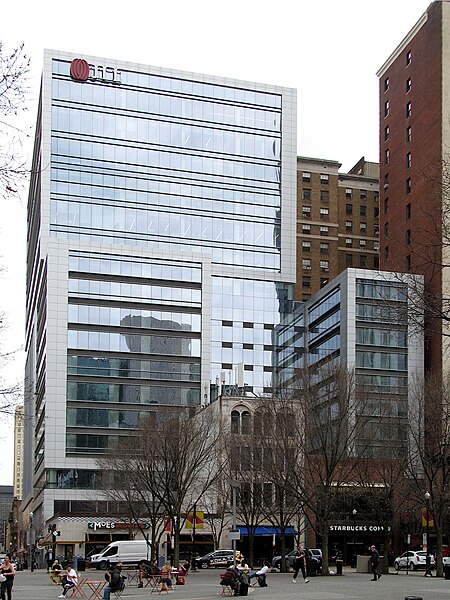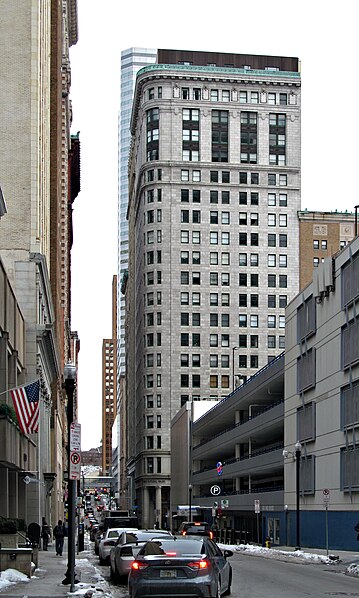
The blockish Tower Two-Sixty looms over the little human-sized buildings on the Diamond.

We’ve already seen this building from the side and rear. Here is most of it from the front, with the Boulevard of the Allies ramp and the low roofline of Chinatown in the foreground. From this angle we can see, if we know its history, how the building was put up in two stages: the original was eight storeys tall, and then five more storeys (counting the top storey, which has no windows on the front) were added a decade later. That accounts for the unorthodox stripe of ornament across the middle, which used to be the cap of the building. But the architects, MacClure and Spahr, did such a good job of extending the building that, without knowing its history, we would never have guessed that the top floors were added later.
Addendum: According to an article in the Engineering News for January 18, 1917, the addition was planned when the original building was put up, so MacClure & Spahr had to create a building that would look complete at two stages. That’s how you separate the pros from the amateurs in the architecture business.

This small skyscraper was not originally built as a skyscraper. The first part of it was put up in 1907; in 1917 five more storeys were added (very skillfully, we might add), bringing the building just about high enough to qualify as a small skyscraper in old Pa Pitt’s admittedly fluid definition of the term. The architects both times were MacClure & Spahr, who also gave us the Union National Bank Building and the Diamond Building, among others. Since 1952, this building has belonged to the city, which calls it the John P. Robin Civic Building.

Now converted to luxury apartments as “The Carlyle,” this classical Fourth Avenue bank tower was designed by the firm of MacClure and Spahr. Benno Janssen, who was working at the firm, is said to have had a large part in the design. It opened in 1906. Curiously, the building behind it, the Commonwealth Bank Building, was built at the same time and reached exactly the same height, 300 feet.